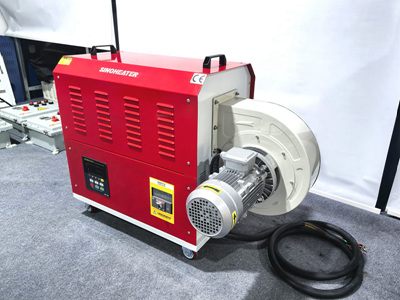Evaluating Airflow Control Features When Selecting a Portable Heater
Choosing a portable heater with adjustable airflow settings involves understanding how wind speed customization impacts comfort, efficiency, and usability. Different environments and user preferences demand varying levels of control over air movement. Below, we explore key factors to consider when prioritizing this feature.
Enhancing Personal Comfort Through Adjustable Airflow
Balancing Warmth and Air Movement
High wind speeds can create drafts, making spaces feel colder despite adequate heating. Look for heaters with multiple fan settings, allowing users to reduce airflow in bedrooms or offices where stillness is preferred. Conversely, stronger settings help distribute heat evenly in large rooms or areas with poor ventilation, preventing stagnant warm zones.
Directing Heat Precisely
Some models offer oscillating functions or adjustable louvers to control airflow direction. This feature is valuable in shared spaces, where individuals may require targeted warmth without affecting others. For example, tilting louvers upward can warm ceilings, which then radiate heat downward, optimizing energy use in high-ceilinged rooms.
Noise Reduction for Quiet Environments
Fan speed directly correlates with operational noise. Lower settings produce minimal sound, ideal for nighttime use or quiet work areas. Prioritize heaters with brushless motors or silent modes, which reduce vibrations and humming. This ensures comfort without disruptive background noise, enhancing the heater’s suitability for sensitive settings.
Adapting to Room Size and Layout
Scaling Airflow for Spacious Areas
Large rooms or open-plan spaces require heaters capable of projecting warm air over greater distances. High-speed settings paired with powerful fans ensure consistent temperatures across expansive zones. For multi-story areas, heaters with vertical airflow control can push warmth upward, addressing temperature stratification common in lofts or basements.
Optimizing Efficiency in Small Spaces
In compact rooms, excessive airflow can lead to energy waste and discomfort. Adjustable low-speed settings prevent overheating while maintaining gentle circulation. Some heaters automatically detect room size and adjust fan power accordingly, balancing performance and resource conservation without manual intervention.
Handling Obstructions and Airflow Barriers
Furniture or partitions can disrupt airflow, creating cold spots. Heaters with wide oscillation angles or focused airflow nozzles help navigate obstacles, ensuring even heat distribution. This adaptability is crucial in cluttered workshops or offices where equipment may block direct air paths.
Supporting Health and Safety Considerations
Minimizing Dust and Allergen Circulation
High wind speeds can stir up dust, aggravating allergies or respiratory issues. Adjustable settings allow users to limit airflow in sensitive environments, such as nurseries or medical rooms. Some models include built-in filters to trap particles, further improving air quality when fans are active.
Preventing Overheating Risks
Proper airflow is essential for dissipating heat from the heater’s internal components. Models with variable speeds ensure adequate ventilation, reducing the risk of overheating during prolonged use. Auto-shutoff features that activate when airflow is blocked add an extra layer of safety, particularly in households with children or pets.
Dry Air Mitigation in Heated Spaces
Continuous strong airflow can lower humidity levels, causing dry skin or irritation. Lower fan speeds or intermittent operation modes help maintain moisture balance while keeping spaces warm. Humidifier-compatible heaters or models with built-in humidity sensors offer advanced solutions for arid climates or winter heating.
By prioritizing adjustable airflow control, buyers can tailor a heater’s performance to their unique environment and needs. From silent operation for bedrooms to powerful circulation for workshops, the ability to customize wind speed ensures optimal comfort, efficiency, and safety across diverse use cases.



